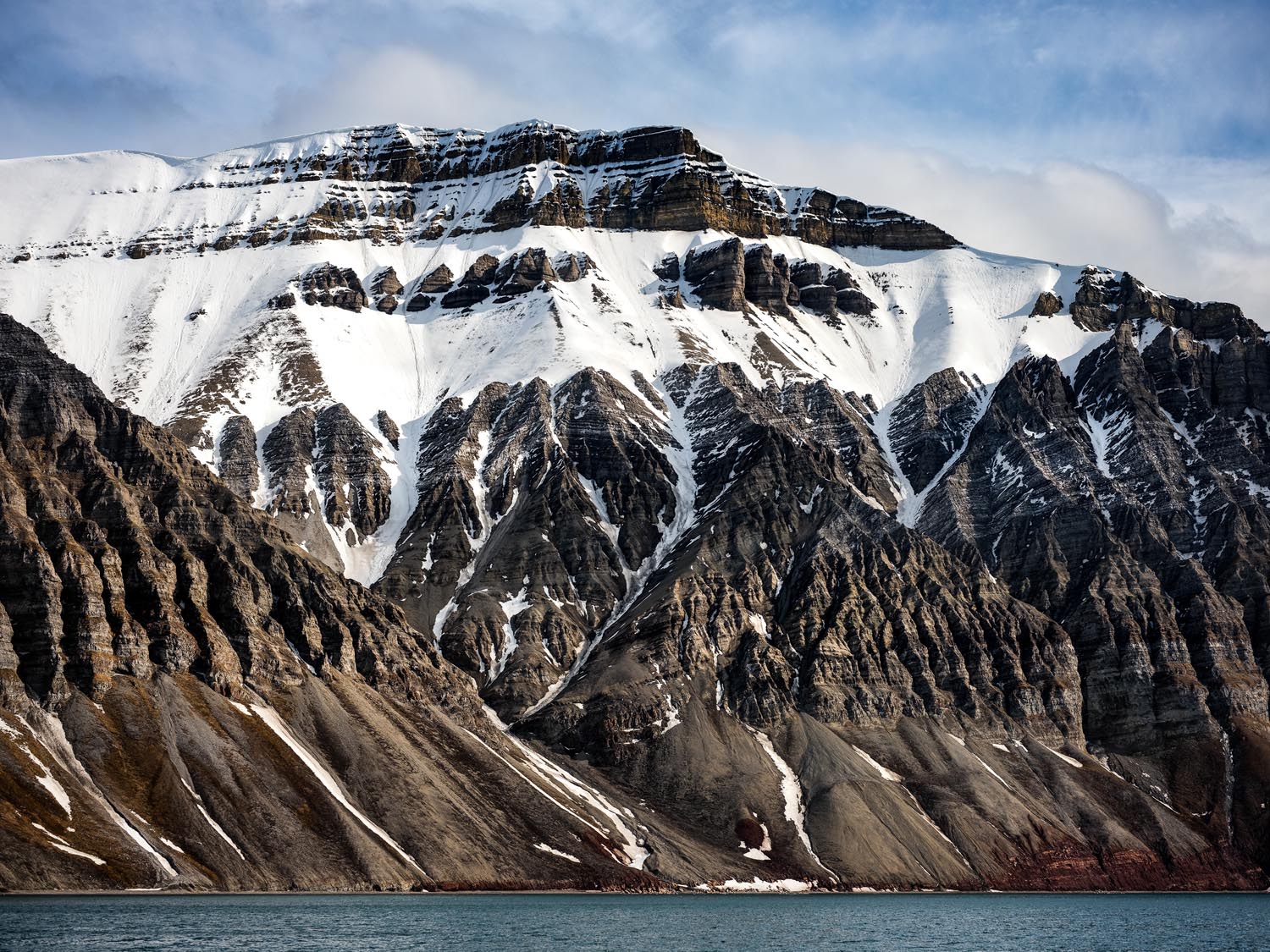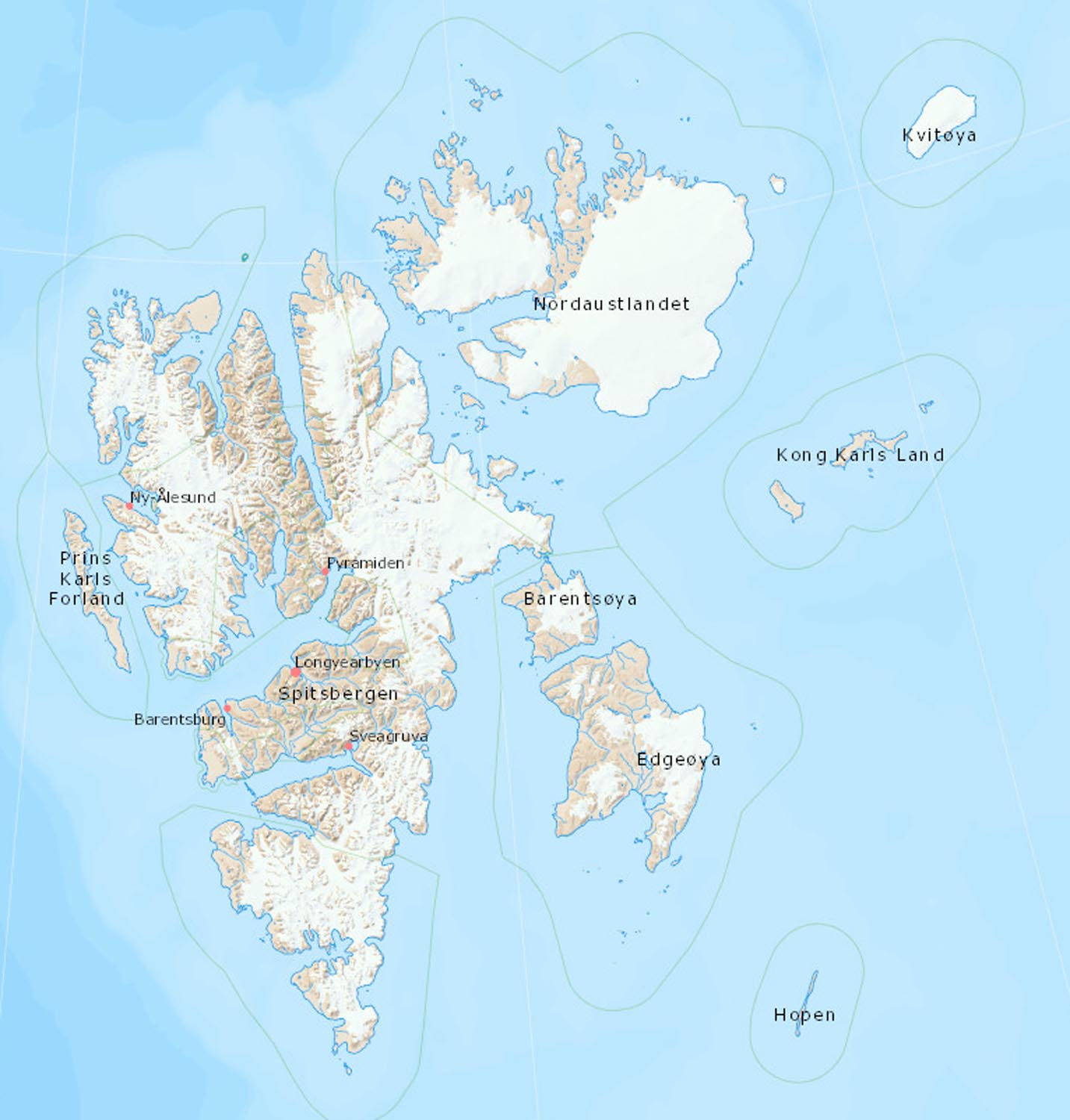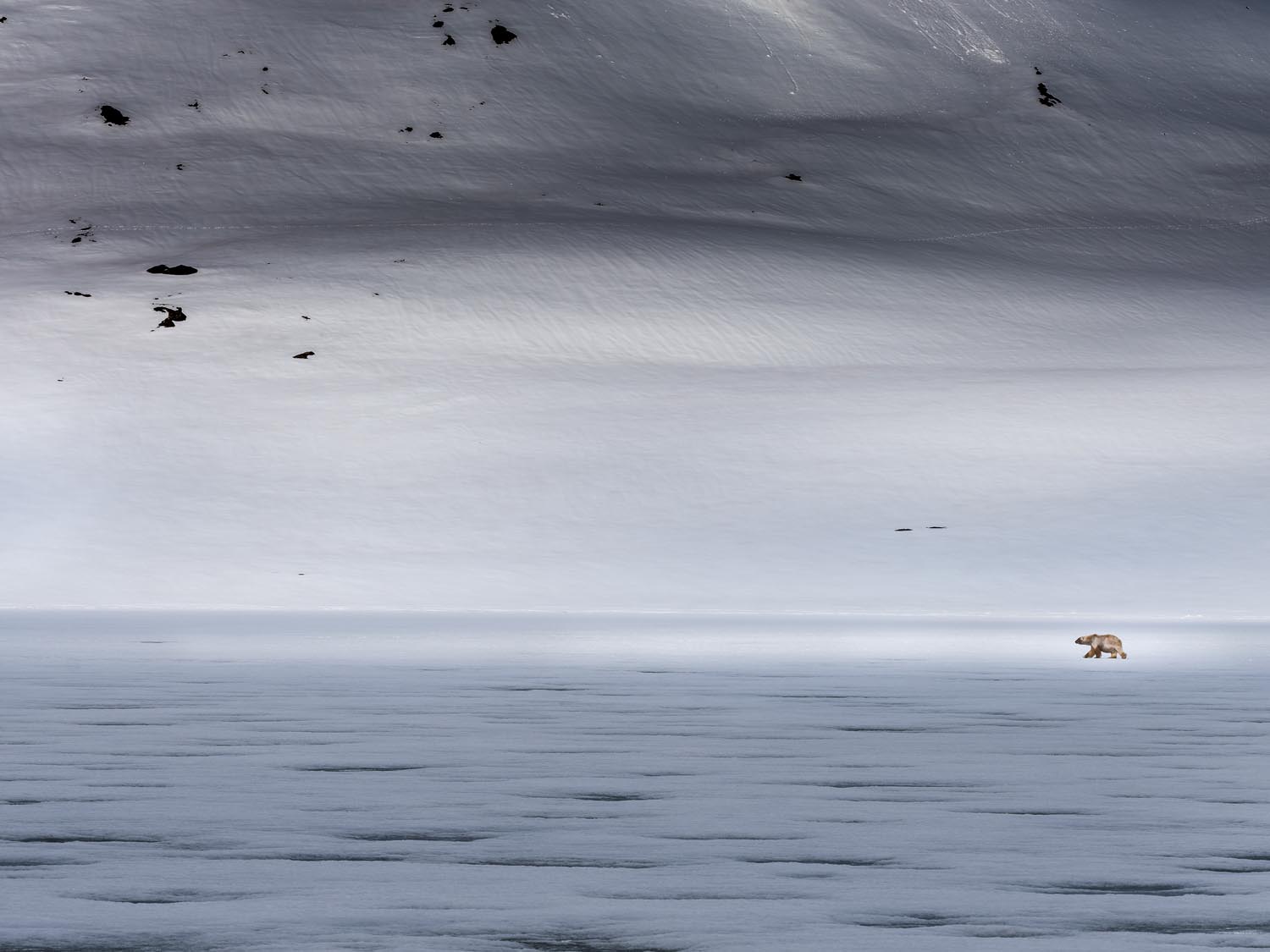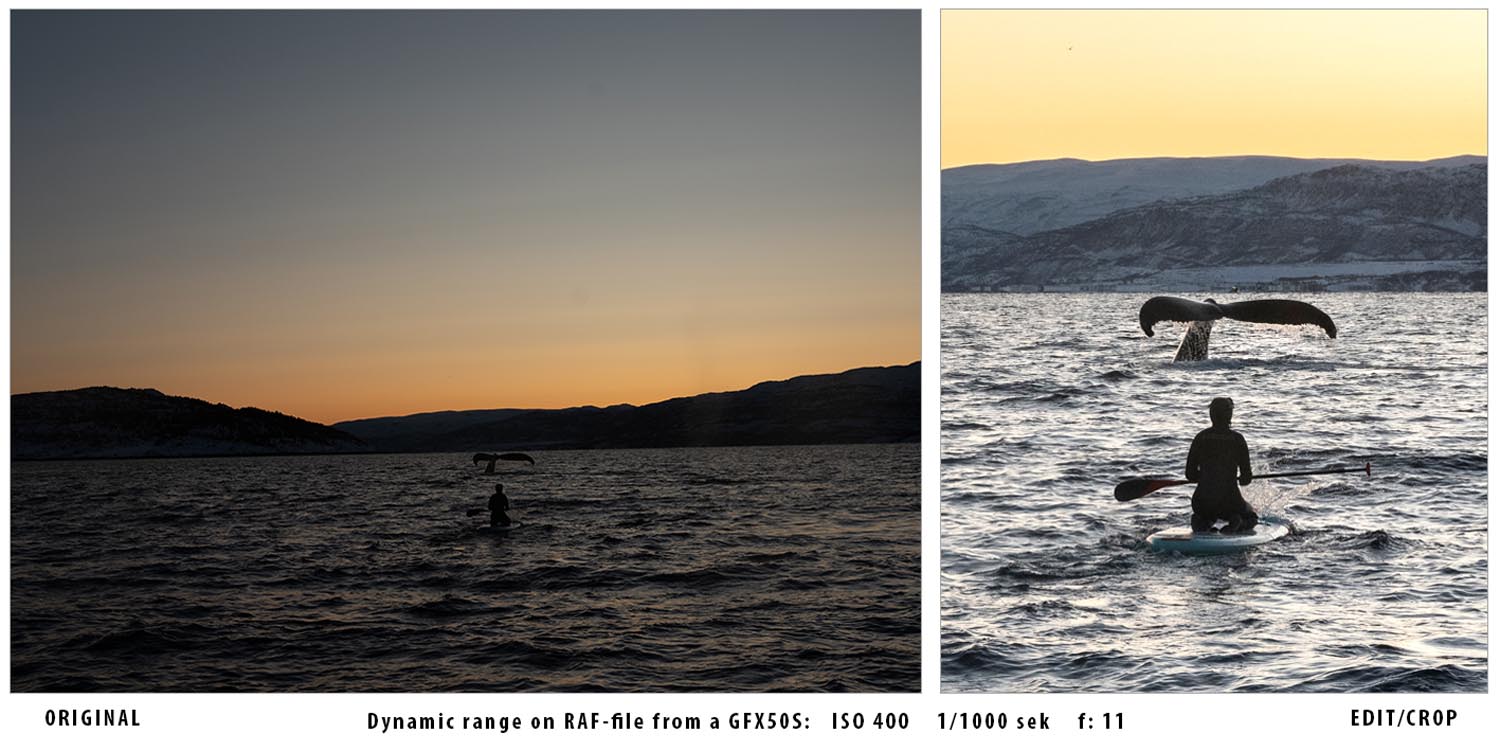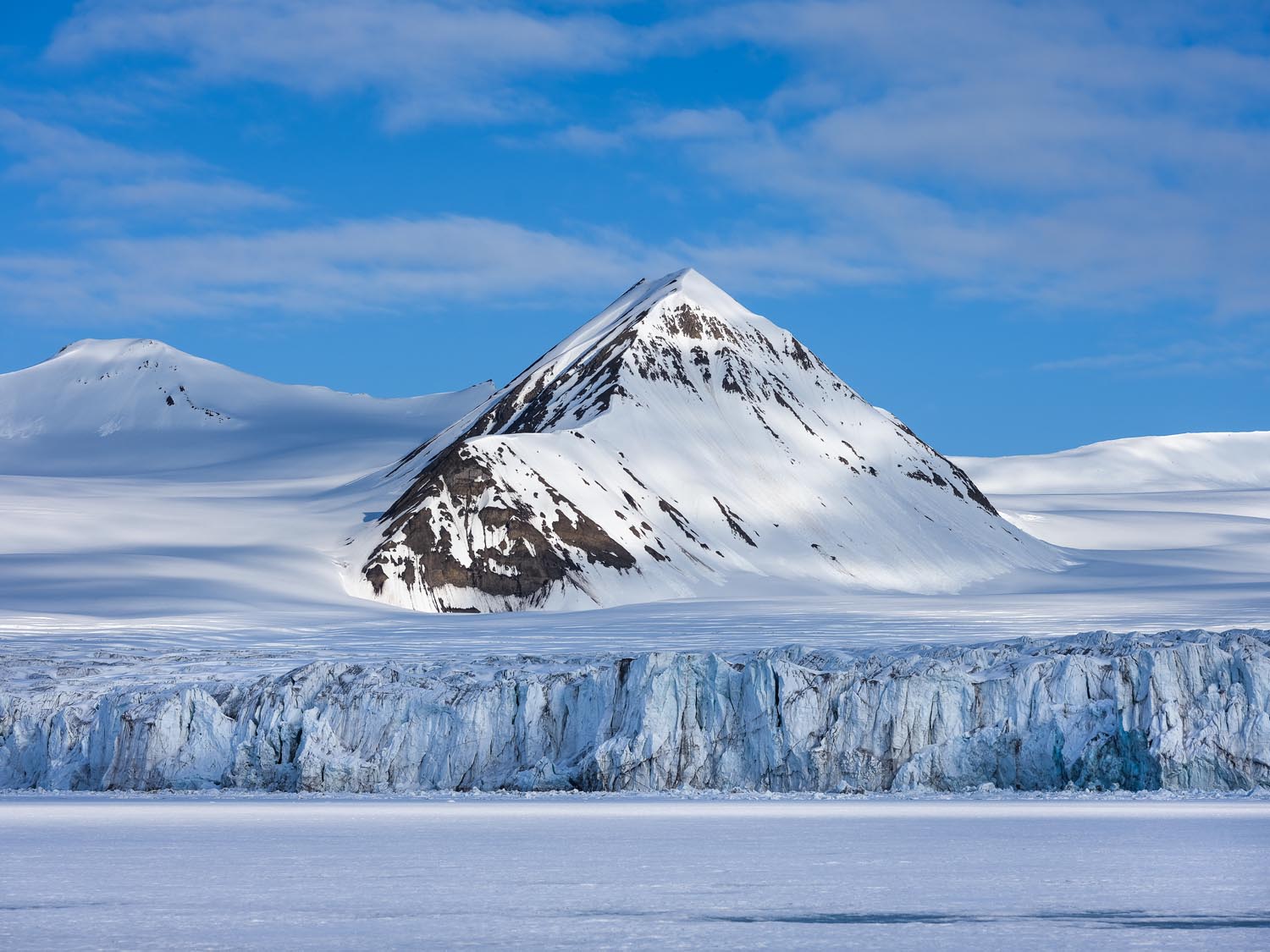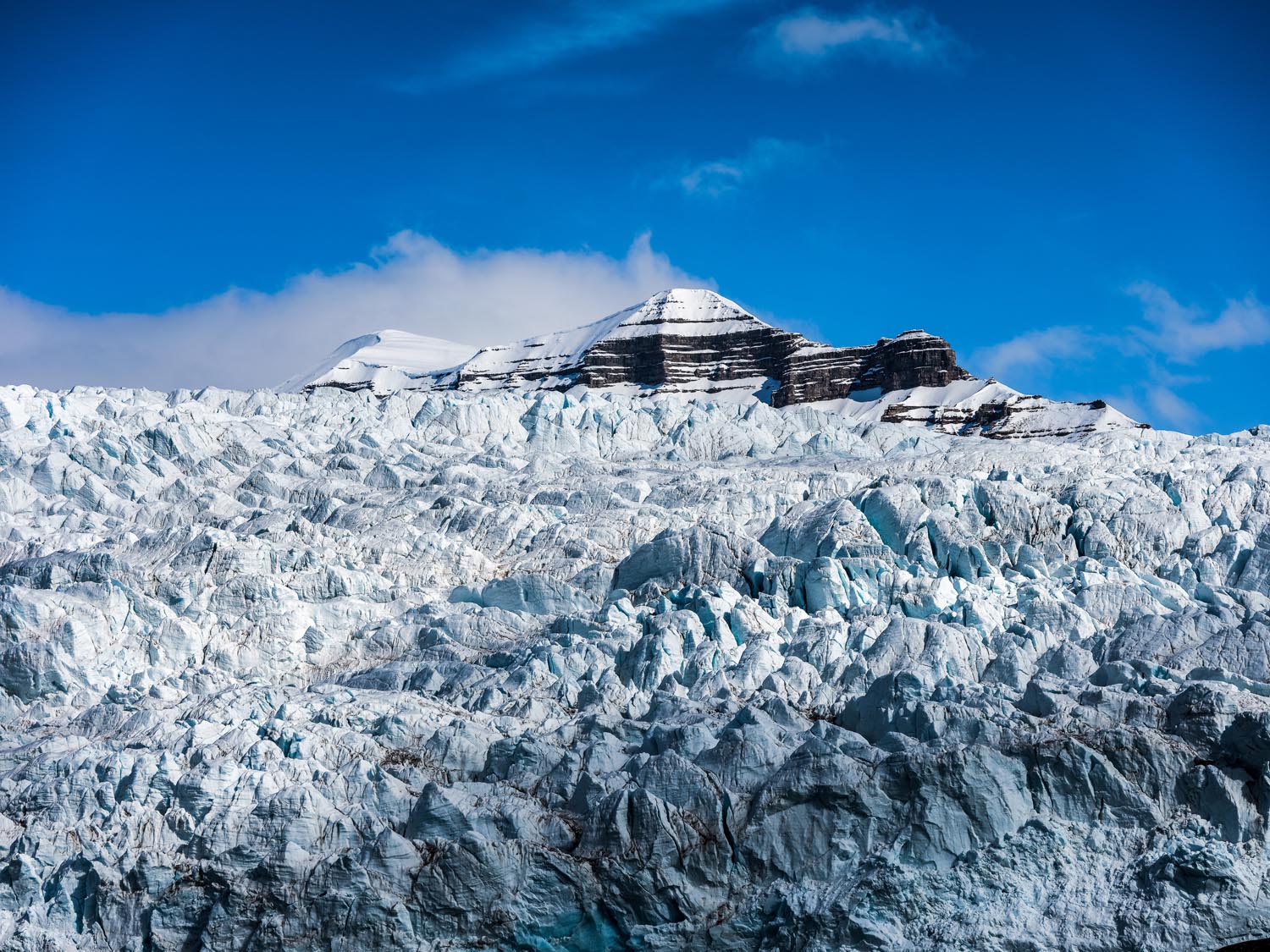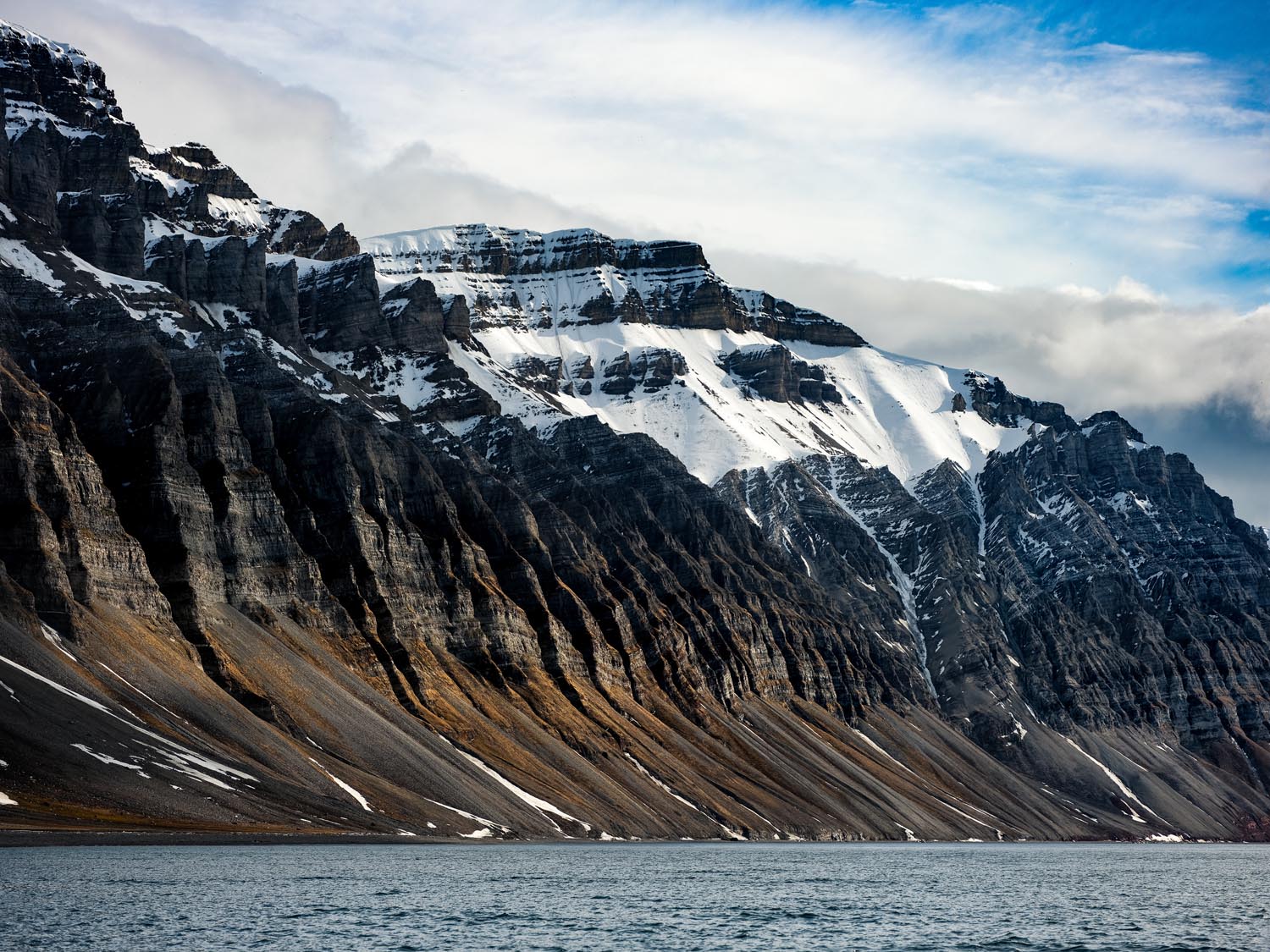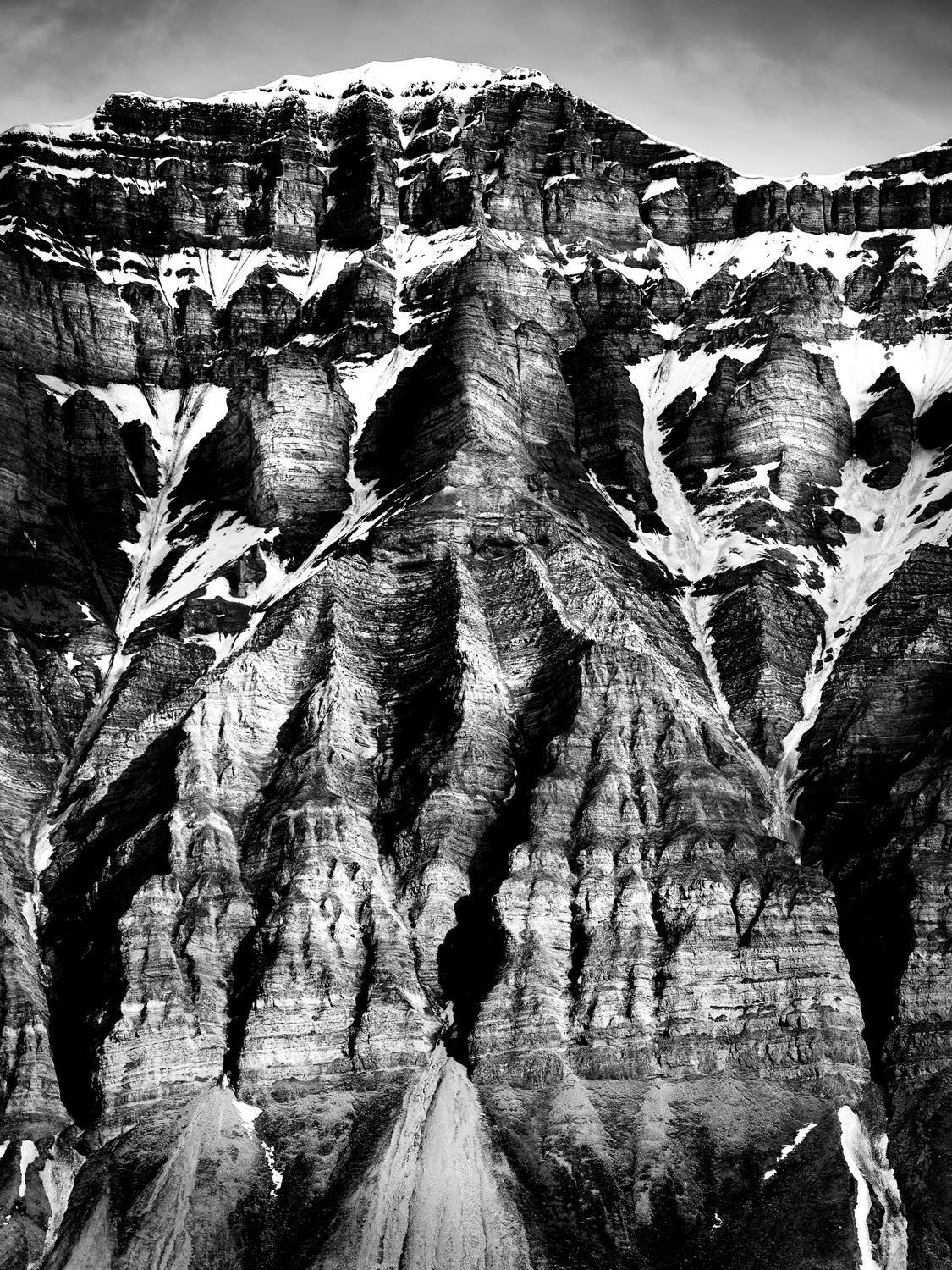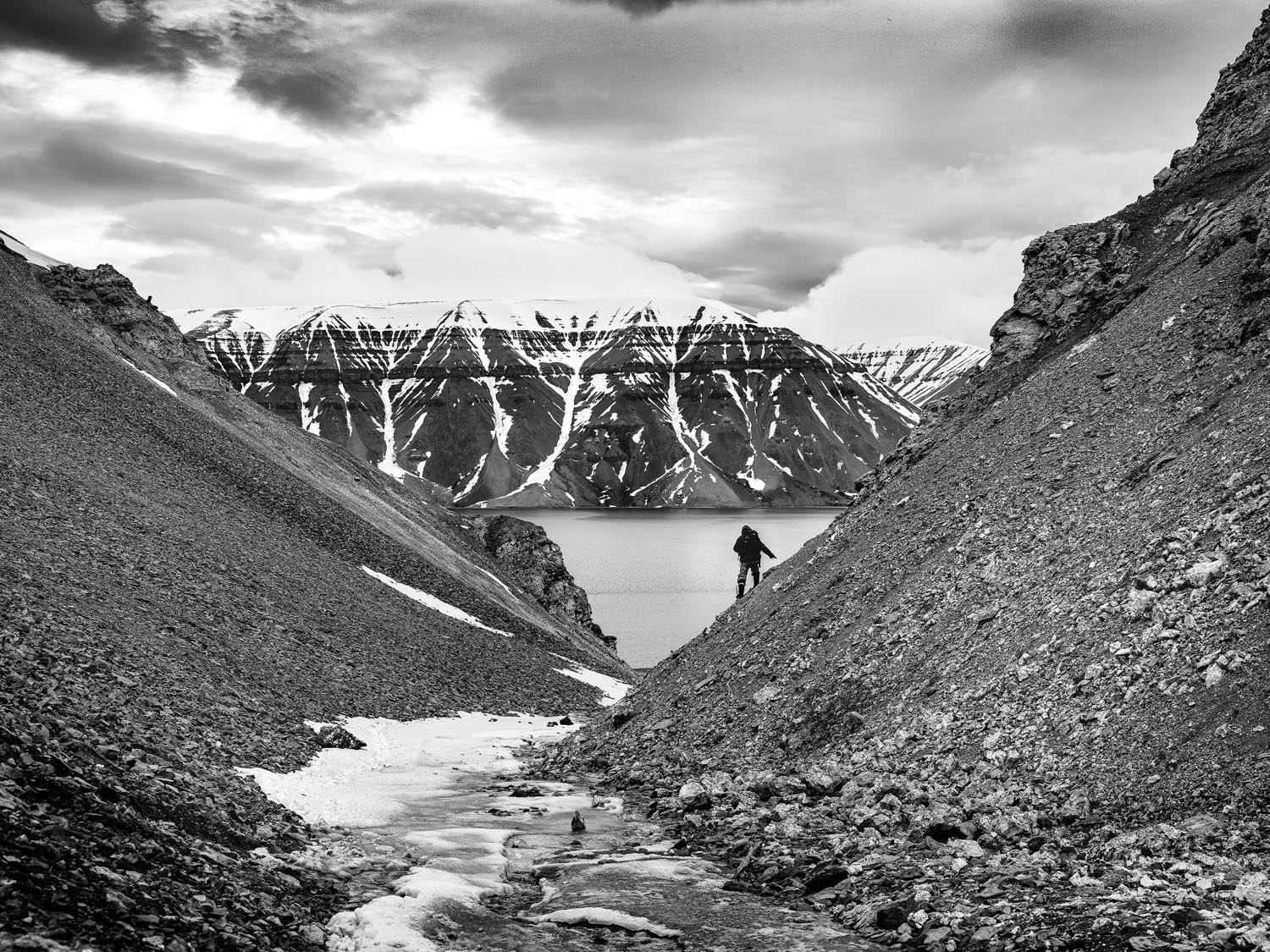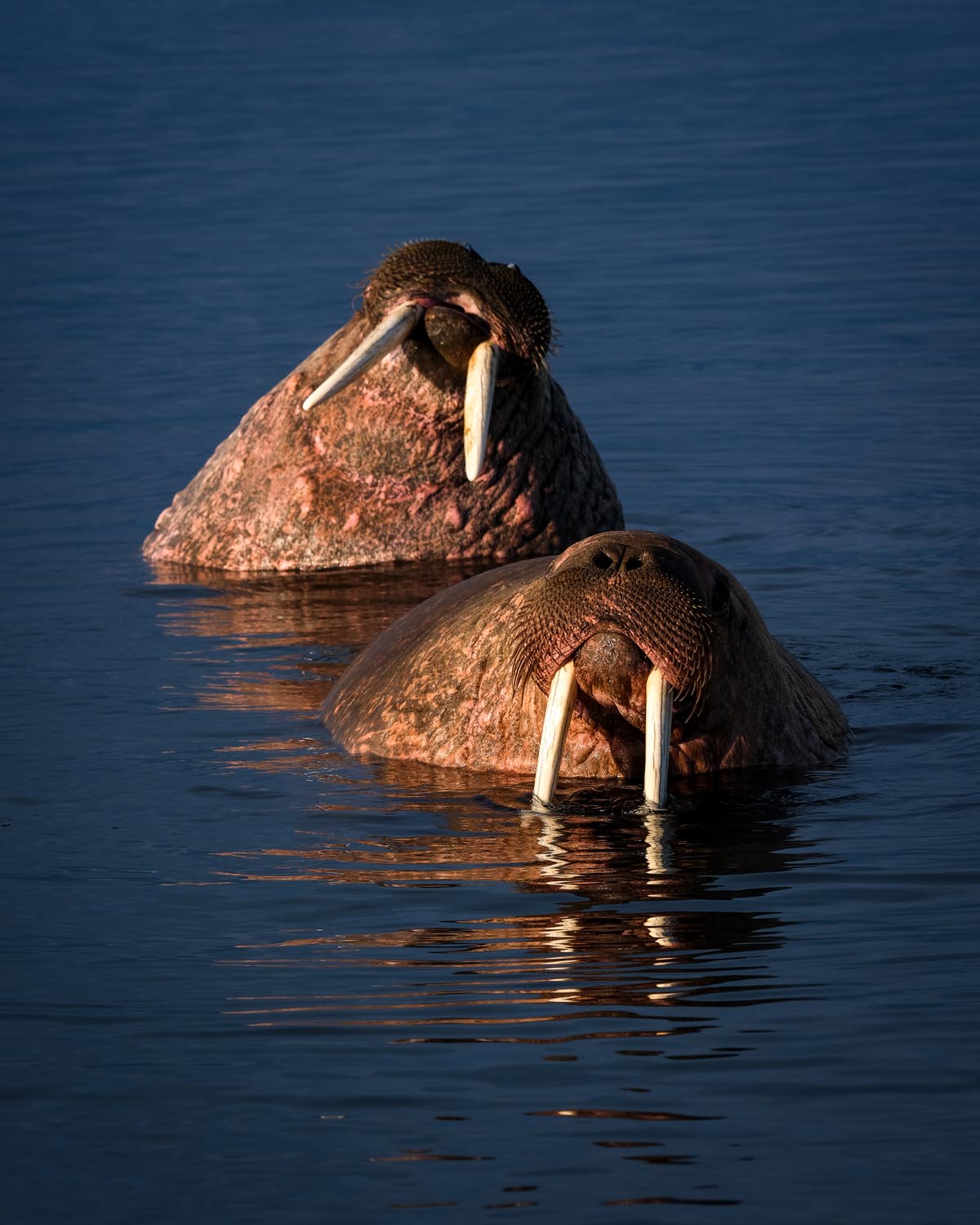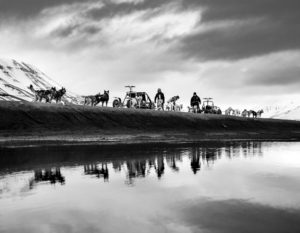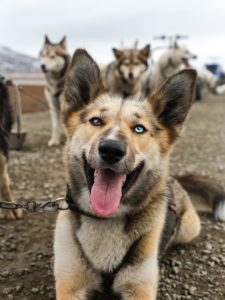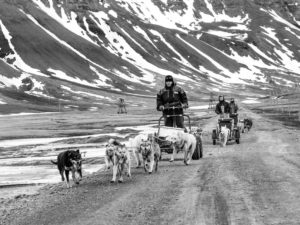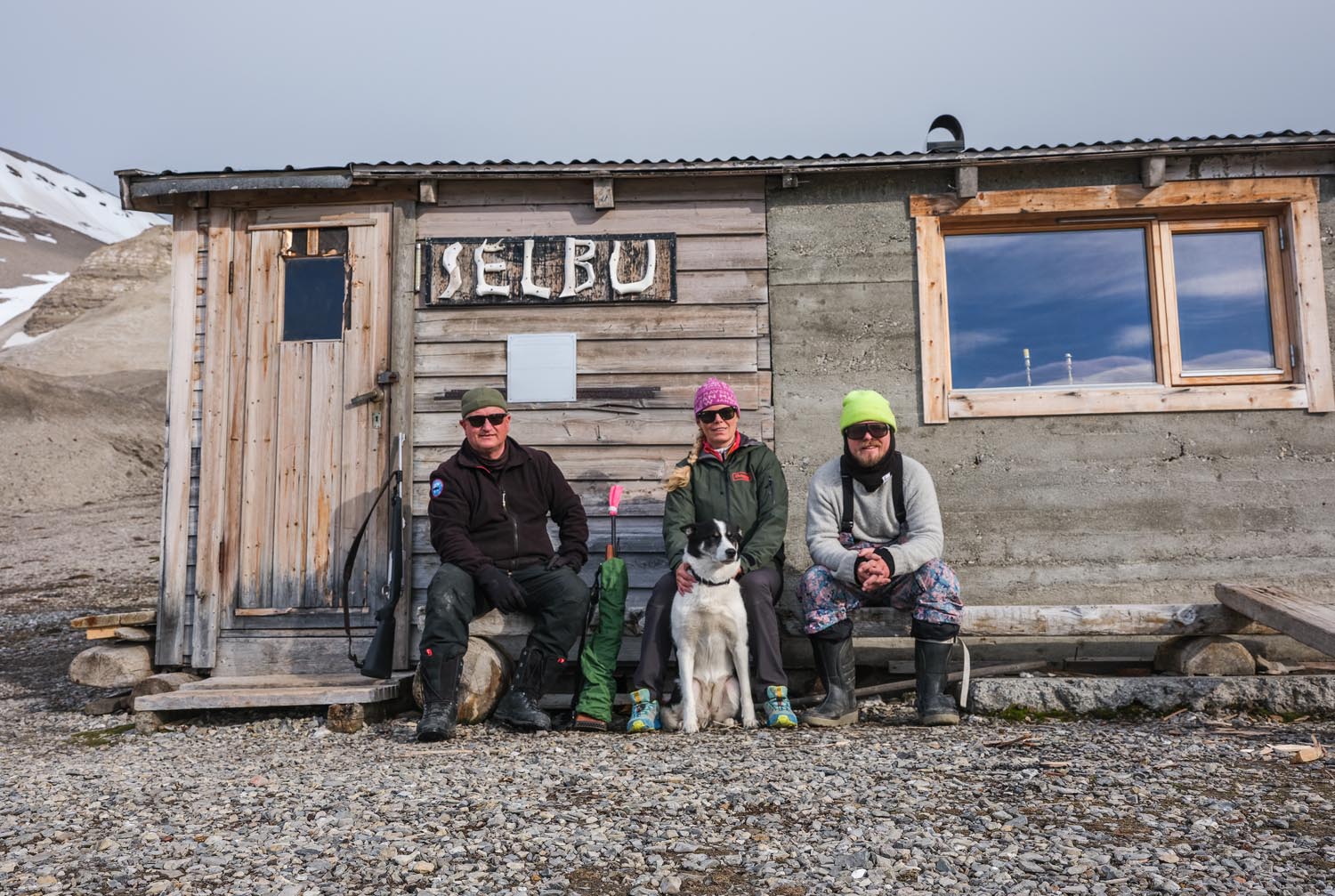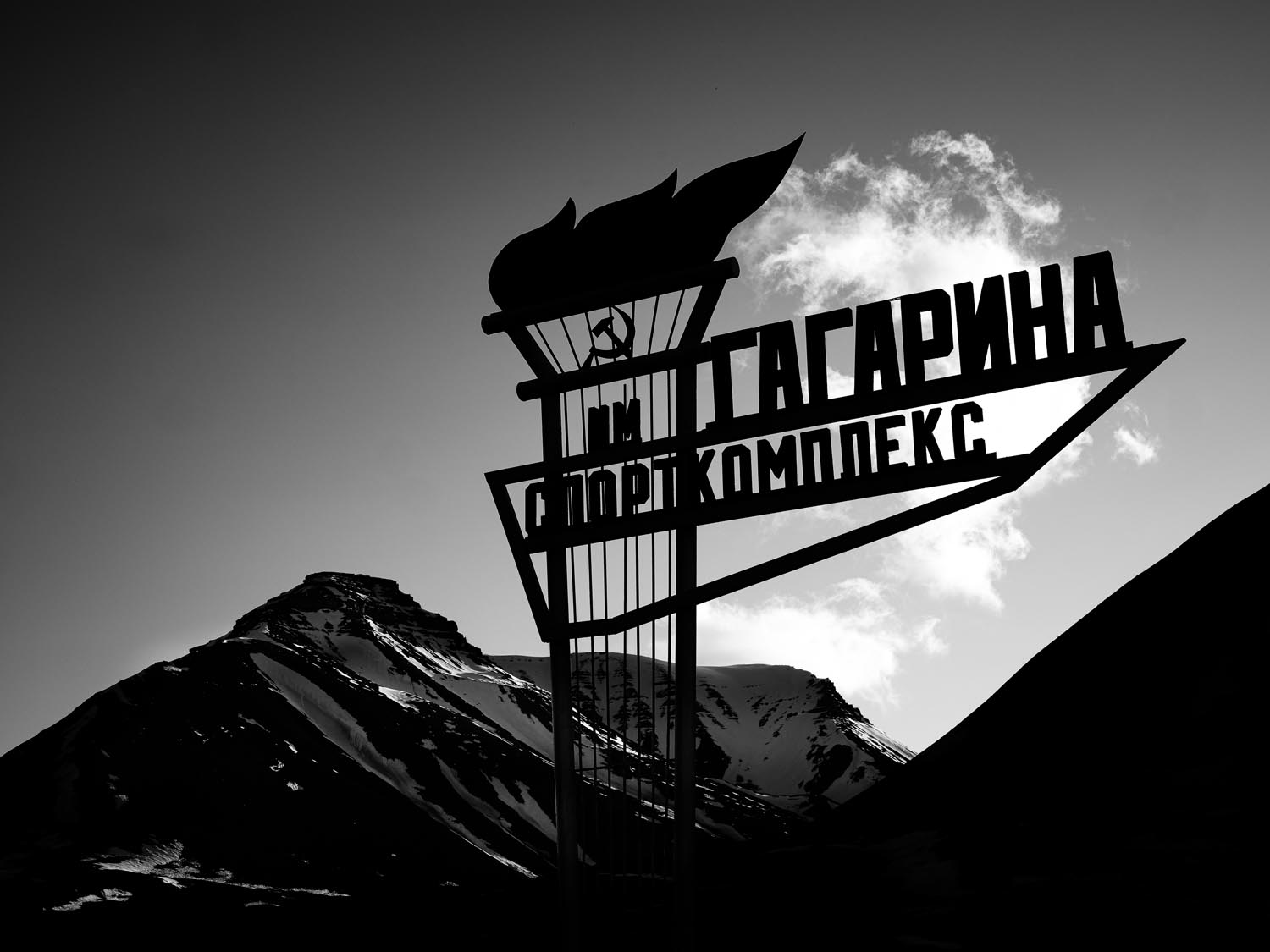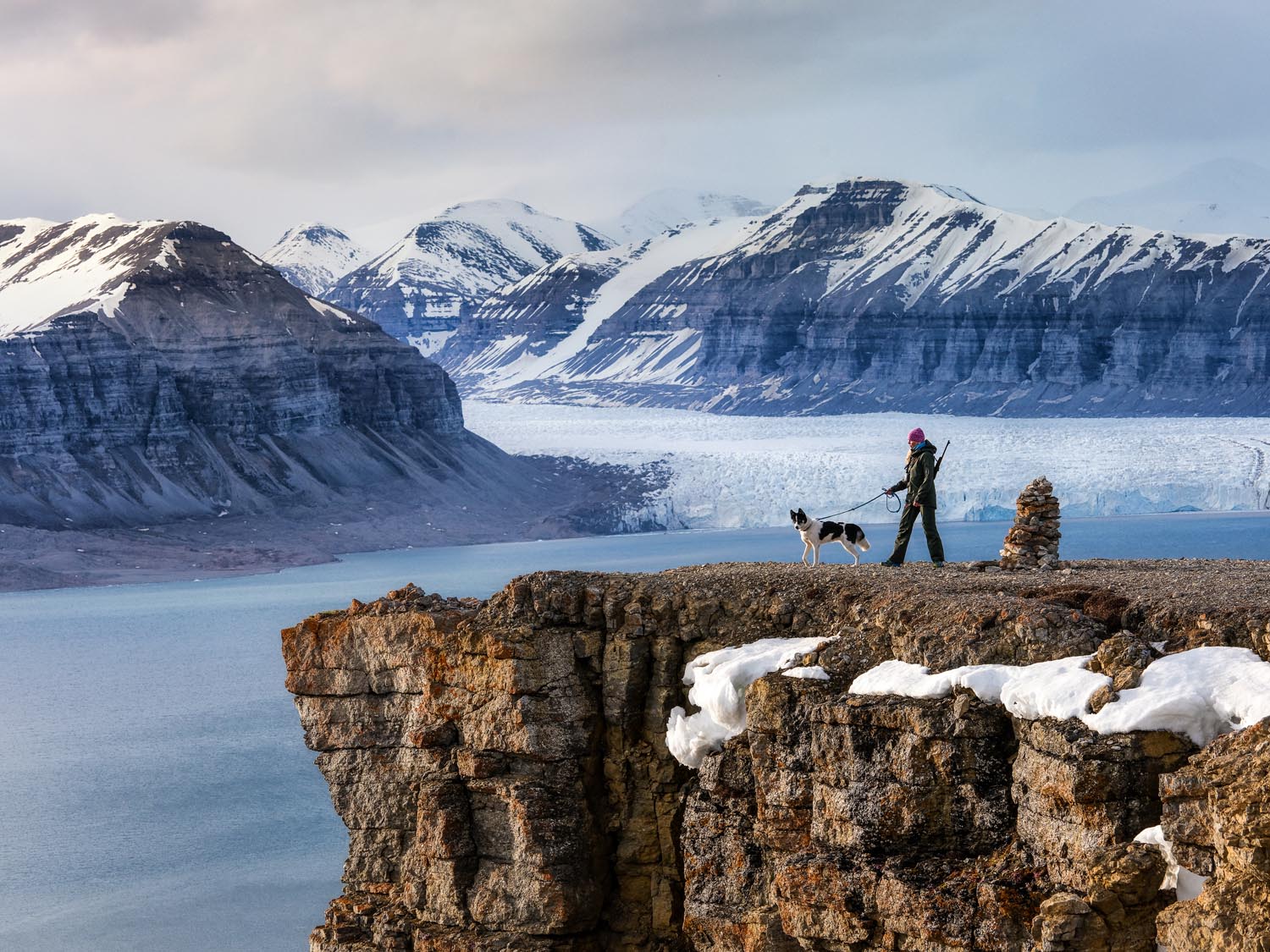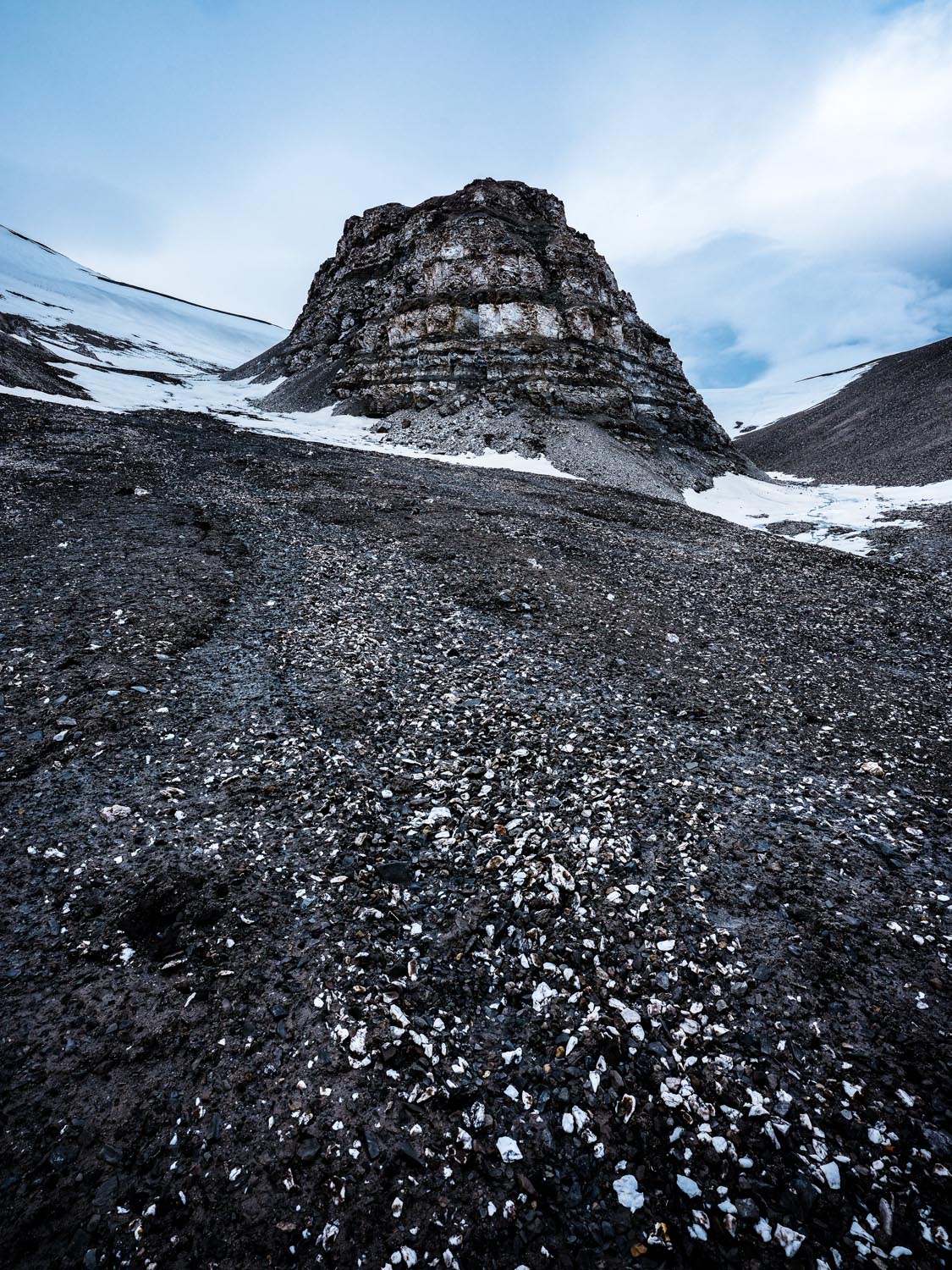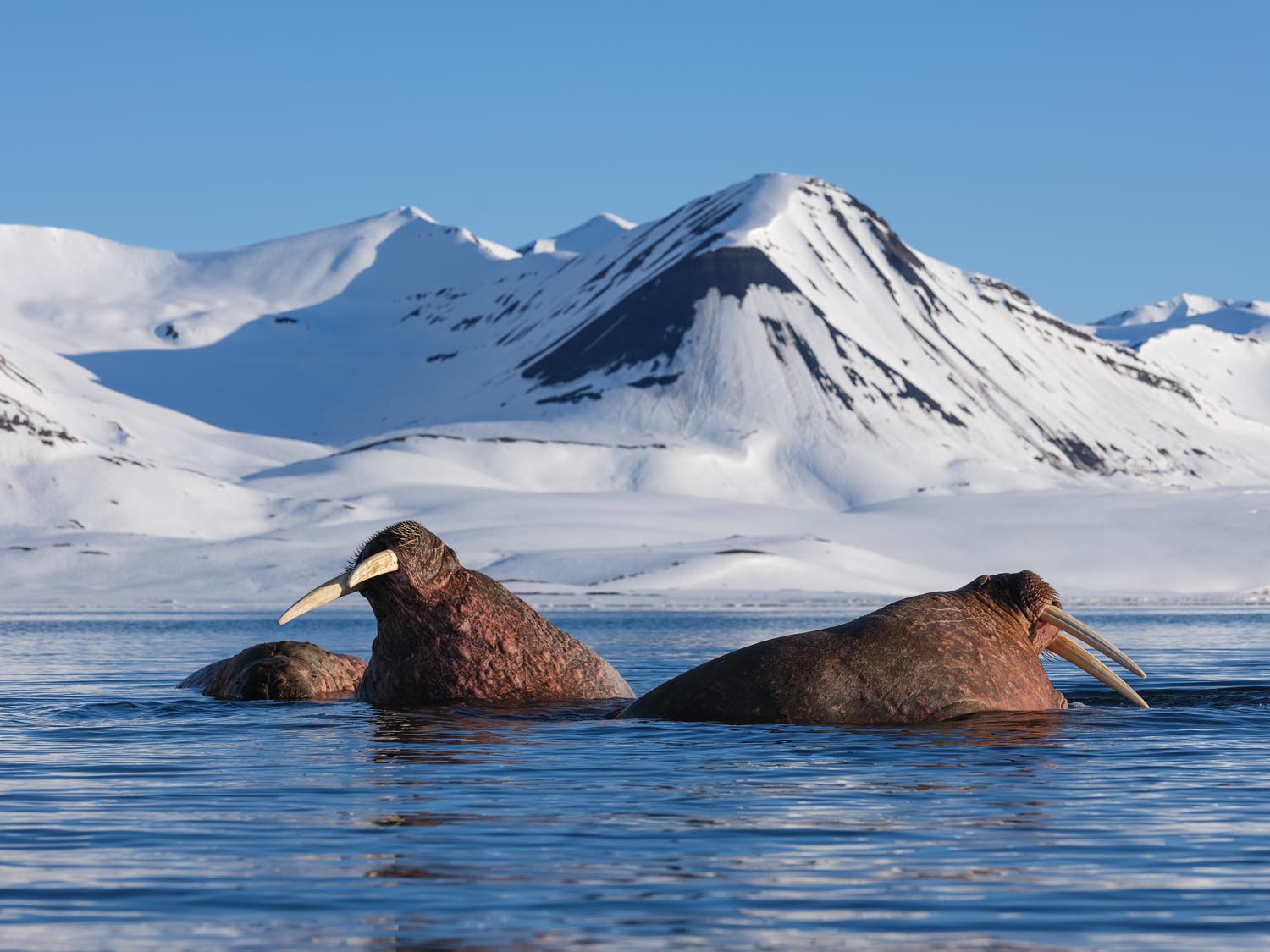
Tommy Simonsen
For the love of the Arctic
For the feeling of being small, to be at the mercy of the elements of nature.
That allows me to experience the greatness of the harsh but fragile beauty of the polar landscape and its creatures.
My name is Tommy Simonsen, an official Fujifilm X-Photographer from Harstad, Norway.
I’ve been performing a field pre-test of the new FUJIFILM GFX50S II and the GF35-70mm in the Arctic.
When I got my hands on the FUJIFILM GFX50S II for the first time I thought: -Yes! This is It! This is what I need to make my days out in the field easier, providing me with a superb quality.
I love the size of it, I love the accurate Auto Focus, the low weight. Well the size of it is just fantastic! I´ve used to drag an analog Pentax 6×7 around in the field for 10 years, so I know what the weight of a medium format camera system means.
The pre-test project with the FUJIFILM GFX50S II has been special in every way. The project was set to mid-June. At this time the midnight Sun has been around at this latitude for several months. That means that the daytime sunlight is boring like noon the whole day. It´s simply too bright. That is the main reason why I decided to work at night and sleep at day;
Almost the whole FUJIFILM GFX50S II project is shot in night light!
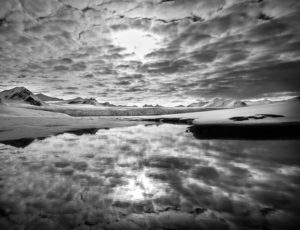
GF35-70mm ISO100 1/160 f:22 09:39 in the evening
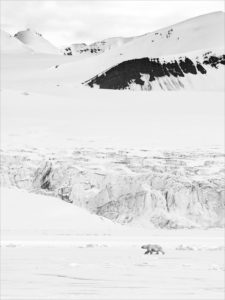
GF250mmF4 + 1.4TC 04:40 at night
The images in this article is edited out of jpgs from the camera, as it is a prototype GFX50S II I´ve been working with.
Search North.
Although I am a Northern Norwegian, I´ve always been searching even further north.
My north is the archipelago of Svalbard.
Located north of Norway between 74 to 81 degrees north.
About 60 % of Svalbard is covered by glaciers.
Those islands are about the same size as Ireland.
I´ve been working as a photographer at Svalbard for more than 20 years, several trips each year. One of those years living there, working as a dog musher.
Throughout all those years I´ve been lucky to establish a stable group of close local friends, just as eager as me to get out in the field around the year.
They are total vital for me to be able to do my photography work here.
Due to safety reasons I never go out in the field in Svalbard alone.
And lets not forget the social reasons: those friends are FUN and solid!

GF250mm+ x1.4TC 12:21 at night
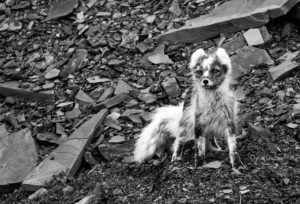
Often it´s nothing about the cameras in the beginning of the journeys,
it’s all about the adventure.
It’s all about getting out, getting away from everything.
Rely on nature, rely on people around you.
Be out to feel that you´re alive.
Then along come the good photographic moments and the images,
while living a good life.
I may not be the typical landscape photographer, since I often add people into my landscapes. But that’s just the way I do my thing.
From the early years I´ve been Inspired by old stories of adventures in the ice. Of men and women poorly equipped with what the previous century had to offer, but with decisive minds, struggling to survive long nights, bitter cold, Polar Bears and Arctic blizzards.
Trappers, explorers, scientists and miners.
Also their stories about the feeling of relief at the arrival of the spring;
The return of the light. About this desolate cold landscape coming back to life. Melting ice, and birds returning in numbers. Vanishing snow. Reproduction. Reindeer calves grassing in the valleys, Seal cubs on the fjord ice. Thousands of chicks in the bird mountains. Rocky terrain that suddenly pops with clouds of tiny pink flowers. Prosperity for all the animals, also the carnivores. The circle of life in just a few hectic summer weeks.
Around the world this place is best known as Spitzbergen. Discovered and named by the Dutch explorer Willem Barentz in 1596 in his search for the north-east passage to China.
What he found was a land with peaky mountains, therefor Spitzbergen.
Spitzbergen is actually the largest island in the archipelago.
Svalbard is an International community with approx. 3000 souls. Governed by Norway, but inhabited by people from all over the world, according to the international Svalbard Act of 1925.
This is why you find both Norwegian, Russian and other smaller international settlements here.
The main settlement is Longyearbyen with about 2400 inhabitants.
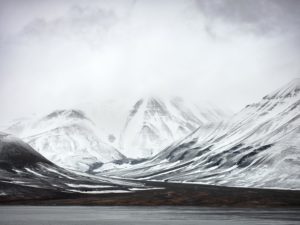
GF35-70mm ISO 100 1/350 sec f:5.6
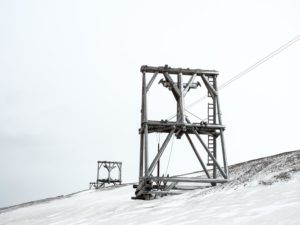
1/80 sec f:7.1 about 05.00 afternoon
For ten years I used to work with analog Pentax 6×7 and Hasselblad. As a result of this I´m quite familiar with what the larger formats will give in crisp details.
When Fujifilm launched the first medium format GFX 50S I was stoked.
Finally something similar to what I used in my early days.
I ended up using this camera mainly for landscape, as I realized that it was a little slow for action.
But WOW those landscape images did fly!
In my line of work I have to travel light. Being out in the field, I have to bring the things I need to stay warm and safe. Then I can´t bring too much weight in camera stuff, to jump onto the rocky beaches and hike the mountains. That’s why I converted from a full frame brand to the smaller Fujifilm X System in 2016.
For this project I filled my small camera bag with one GFX50S II body (a little larger than the X-H1 body) and Three lenses: A wide angle for landscape/documentary, a normal zoom and a telephoto zoom plus the GF 1,4x tele converter.
My three preferred lenses was: The wide GF23mm 1:4 (equal to 18mm f.f) , the new superlight normal zoom GF35-70mm (28-55mm f.f) and the GF100-200mm 1:5.6 (79-159mm f.f).
I also used the GF250mm f:4 and TC for the Polar Bear shots to keep distance (helped by additional cropping).
Prime lenses are of course giving the best quality.
Due to weight and size, I prefer zoom lenses.
The new GFX50S II has the same body as the GFX100S. For me in the field the superb IBIS is highly welcomed, taking away a lot of need for tripod. It also provides extra stability in the moving small boat in both telephoto photography and high speed filming. The accurate AF and the faster serial shooting is also much appreciated.
Being used to the X-T series in the field, I do miss the ISO and shutter wheel on top of the GFX50S II, but I easily got used to scrolling the ISO at right hand index finger and shutter at the thumb.
The new and smaller batteries are powerful. I used one or two each night with intensive shooting and IBIS in use, at temperatures between -2 to +4C. That’s a good improvement. Best part is the new dual usb-chargers, giving me the chance to recharge the batteries by powerbanks in the field, where there´s no other way of charging.
One thing I really love about the GFX format is the sensor’s dynamic range.
One thing we got plenty of by living in Northern Norway, is winter months with dark season and limited light.
As I do a lot of photography with high speed shutter values on animals this is a challenge. Especially my whale and Orca projects at the beginning of, and during the dark season where we got no Sun. Normally I would need shutter speeds up to 1/2000 part second to freeze the movement. That is the recipe for ISO 6400 and more, with all the noise and bad colors that I would get under such conditions, especially with the smaller X-sensors.
With the large GFX50S II sensor, I could totally undershoot the image dark black at ISO 100-400, and then re-extract all the information in the raw-file, restoring both details and color, and even do post cropping if needed.
Totally impressed! A new world for me!
Since it´s been bright all the time at Svalbard this time, my sample is from the whale project in Northern Norway by the GFX50S.
The new GF 35-70mm is a surprise. 2x zoom to make it compact, and that’s fine with me. A lens that equals the wider 28-55mm is better to me than the more narrow 35-70mm.
As an extra effort to make it compact, Fujifilm has given it the newly developed collapsible structure, to make it even smaller in the bag.
This means that you turn the zoom a little further from 35mm, and then it becomes smaller than when it is in use. Changing lens with gloves is a little difficult, since the grip band on the lens is a little narrow. I ended up opening/closing the lens when changing it. But that’s just details I got used to handle.
The weight is only 390g, with a close range of 35cm. The lens is, as the GFX50S II weather resistant; witch is totally vital in my line of work.
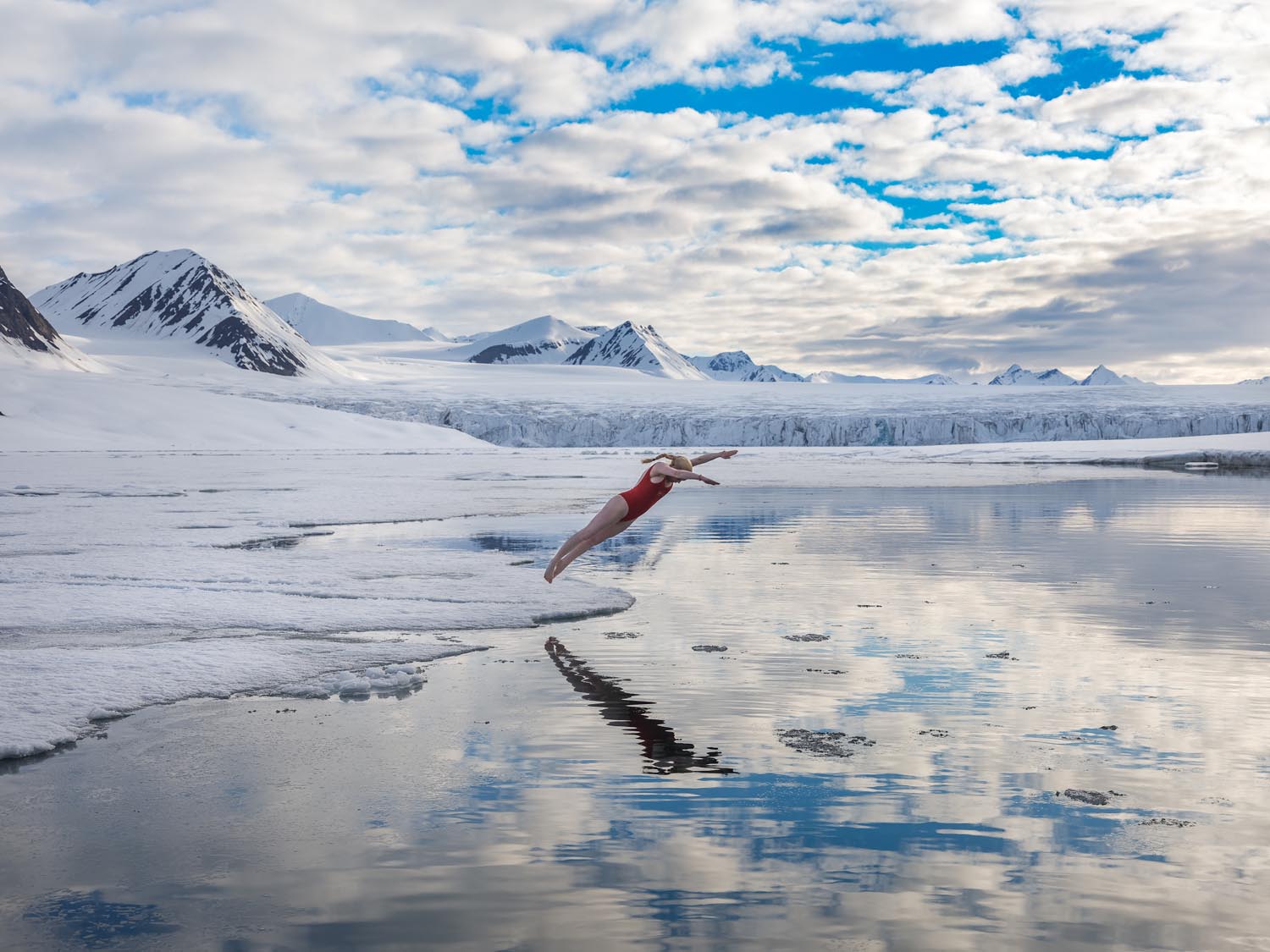
GF35-70mm ISO 320 1/800sec f:8 11:45 at night Silje, a former swimmer, damaged her elbow in a severe snowmobile accident many years ago. This makes it difficult for her to stretch out her arm while diving. But she is still able to dare a graceful midnight swim in front of the glacier. Water temperature +2C.
Bottom line, this is a fast lens with the STM system, accurate in AF that produces sharp images, as I have witnessed the weeks I have used it.
On most GF-lenses the aperture is adjusted by the ring on the lens.
At the GF35-70mm you swap between adjusting ISO and aperture by pushing the index-finger wheel at front of the camera
The combo of the GFX50S II and this lens gives me a superb compact, bring-along medium format camera.
The price Fujifilm has set for the GFX50S II and the GF35-70mm kit lens will probably make it a success in the semi-pro/pro market, so Fujifilm´s competitors will certainly notice the entrance of this baby!
What makes Svalbard special for photographers and filmmakers is the light.
We have many months of dark season in the winter. Then we`re talking Polar Night: complete darkness. The only visual way in Longyearbyen to see if it´s day or night, is if the moon is up: If the Moon is out in the fjord it´s daytime, and if it´s up in the valley it´s night.
There is by the way nothing more magical than the dark season full moon week:
A story about beautiful snow covered valleys reflected in blue, white and silver light, thousands of stars, and Aurora if you’re lucky.
The transition from darkness to total brightness goes fast;
Around March 8th the sun shines in Longyearbyen for the first time each year. A few weeks later about April 20th, we have the midnight sun for the next four months!
The nature doesn’t come back to life during spring in May and June. It Explodes back to life!
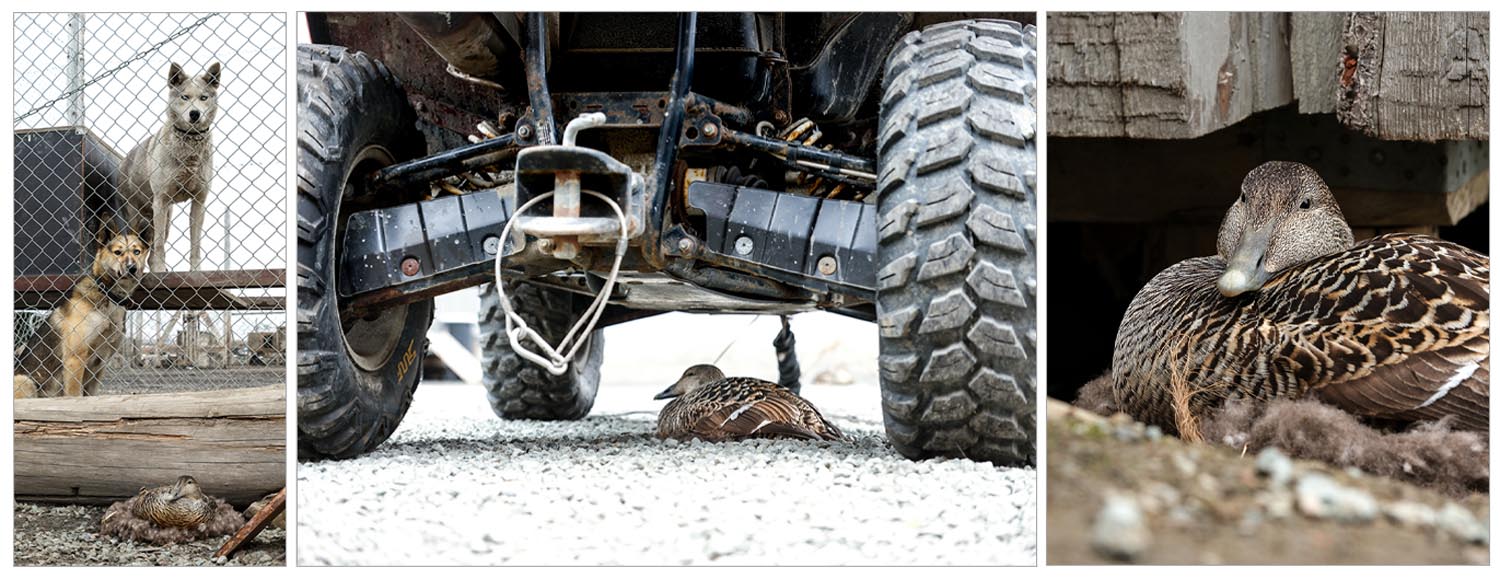
About a thousand Eider ducks are nesting everywhere around the dog yard of Svalbard Villmarkssenter, just out of reach to the sled dogs. The Eiders have realized the dogs gives them a little protection from predators.
It is the angle witch the Sun hits Svalbard being so far north, that makes the light so special here. Even the white balance on the cameras doesn’t work perfectly.
RAW is essential.
When you get to this latitude other locations around the north pole, these places are mostly capsuled in ice. The reason Svalbard is accessible is due to the last remains of the Gulf Current, that heats up the west coast. This is one of the few places in the world you can get this far north without being on a expedition.
To understand how far north we are:
If you board a plane in Longyearbyen,
it will only need to fly for one hour to reach the North Pole!
Instead of trying to do the project on a large boat around Svalbard, I decided to use smaller boats in the Icefjord outside Longyearbyen and its smaller side fjords.
On the map one can get impression that it’s small.
But it’s actually huge, about 107 km long.
The weather system in the Icefjord and the side fjords are often different and rough, making them insidious to travel in smaller boats. But I prefer the smaller boats because they are the solution to this sort of photo expedition, as they don´t need much water under the keel, and can be landed directly on the shoreline. What makes the Icefjord interesting, is the variety in types of rare landscapes, wildlife and especially breathtaking dramatic history and the remains of this.
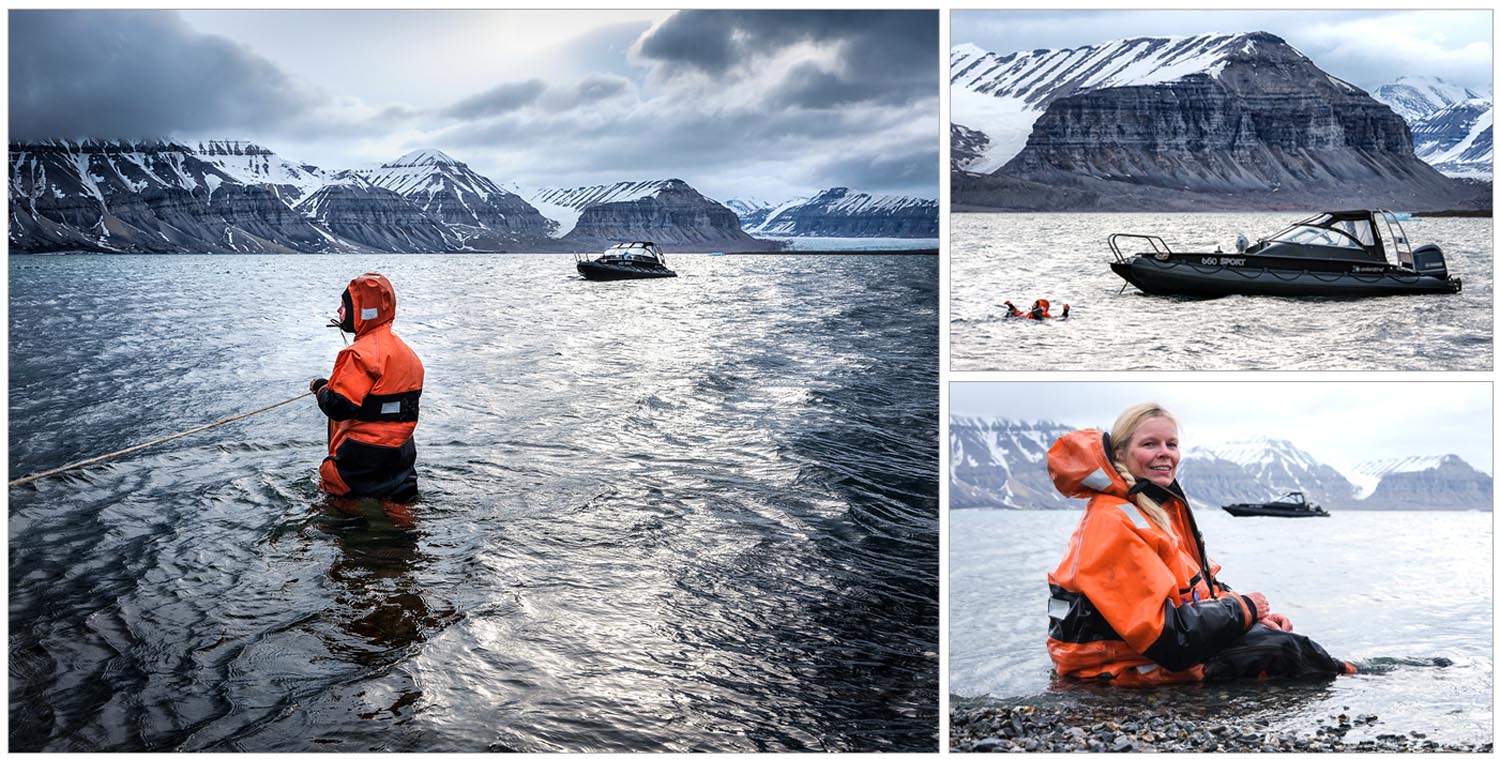
Our Captain Silje Marie Våtvik, and her small and sturdy 225HP boat. GF35-70mm/ GF100-200mm 03:00 at night

GF100-200mm ISO 500 1/800sec f:32 10:24 evening (left) , GF100-200mm ISO 50 1/200 f:10 04:24 at night (right)
Being located so far north, the weather is quite unstable. From day to day, even from valley to valley. Arctic low pressures suddenly comes pounding in from the ocean. To be sure to make this project successful, it wouldn’t be enough to come up for a few days to do this. The weather, especially strong winds would keep me stranded, either in town or better, at a remote old cabin in the fjords. We where actually stuck in one fjord the last days, almost loosing our flight home. To do a project like this, I actually have to plan for such a scenario.
The whole project was an expedition. In the beginning it is nothing about being a photographer, except from studying the mapsa finding out where you want to go shooting. Then figuring how much time it would take to get the job done.
Everything about getting around takes time in advance. Preparing boats, bringing enough fuel and supplies in case we get weather stuck. Securing cameras in waterproof bags. Bringing enough power for them. Safety equipment like satellite telephone and emergency beacon. Planning for good anchor places where we are going. And most of all: having a good plan A and a plan B reading weather predictions so we know when to start out from port in Longyearbyen.
Once we have left the harbor, I can start to think about shooting images. I have to stay on the alert all the time, because I never know what will happen:
Wildlife might suddenly approach and the light conditions will for sure suddenly change, painting the unique terrain with dramatic contrasts.
If you come to Svalbard, you shouldn’t come for the Polar Bear. If you’re lucky, you might get to see one. I actually didn’t see Polar Bears the whole year I did dog sledding! A guide that came a year later than me had a non-hostile close encounter on his first day out. My advise is: Come to Svalbard for all the other beauty this land can offer, and you won´t be disappointed!
The Bear is just a bonus.
People ask me if I am not scared of the Polar Bears, being so much in the field at Svalbard. It is estimated to be about 3000 of them around Svalbard.
I have huge respect for this animal, and we are real careful when we move around, using the binoculars or telephoto lenses a lot to observe the terrain. We try to shoot images at a distance,
and if we find one Bear that is trying to avoid us, we leave it alone.
Throughout all my years at Svalbard, I haven´t had any dangerous close situations. Not even on the several week-long, slow-moving dogsled expeditions to the east-coast, where the Polar Bear density is much higher.
No, I´m not actually worried about the Polar Bear, but I´m afraid of the weather. I can´t control the wildness of the arctic elements. I just have to gather as much information as possible, and make solid decisions with my travel mates.
For photographers and filmmakers, Svalbard is the biggest nightmare, and at the same a chance for their largest dreams. At Svalbard the weather changes fast. It is seldom just blue skies or total cloudy. Often it´s cloudy with rifts, where the Sun comes through like a laser beam, painting the terrain with beautiful lines of dramatic light and contrast.
One of the things that makes this land special is the total lack of trees and larger vegetation, making you able to read millions of years back in time at Svalbard like layers in a cake. The mountains are carved out by glaciers and eruption, giving them an out of this world look.
Because of the missing trees, you got nothing to measure distance. A valley you predict to be 500 meters wide, would most probably prove to be three to four km wide!
At a distance the mountain slopes appears to be nice to walk to get to the top.
When you come close, you realize that the slopes are just larger and smaller pieces of crushed edgy sandstone. Like walking on the Devil´s dance floor. It´s like this all the way to the top, where you often enter a terrain of flat plains. The plains actually used to be ocean floor during the ice age, until the glaciers retreated, allowing it to rise high to become mountains without the enormous pressure of the ice.
Wind is a challenge at Svalbard, with it´s wide and long valleys where the wind grows in speed and intensity. But it often calms down in the evening and at nighttime, making it nice to be outside and giving us still water with beautiful reflections.
This was also an important reason why we changed day and night on this Project.
During winter, the most common way of getting out in the field is by snowmobile.
However I must say that the oldest and best way to get out in my opinion, is by a dogsled. That is outdoor life for the heart and mind.
We use sledges at snow, but you can experience this in the summer by carts on the roads outside Longyearbyen. We can´t go off road, because that will damage the tundra.
I´ve been working as a guide and photographer for Svalbard Villmarkssenter since 2003; the oldest polar dog company at Svalbard, honored with a price by WWF for non-motorized tourism in the Arctic.
Your furry companions will always welcome you with joy, and will work hard for you as long as you cheer them and work together with them.
Going by dogsled, is just as traveling by a sailboat; It´s not about going there, but about the journey on the way.
Dogsledding is not going fast.
Just as fast, so your soul can keep up with you.
-All the way.
-What is the best month to go to Svalbard? My answer to is that there is no best month here. Because it changes so fast, and every time I come up here, whatever month it is, the scenery, the landscape is totally changed.
Like landing on the moon, only that I return to my second home.
I´ve been so lucky, to be able to do this sort of job I do. To go out on arctic adventures, to go out with good people in the field.
It’s basically a dream job.
I can´t wait for the time to come, to bring the new tool with me in the field!
The GFX50S2 will definitely be my new preferred camera.
Tommy Simonsen
Harstad, Norway
June 2021
-The end of the line-
At the start of the 1900’s there was a huge interrest for natural resorses at Svalbard. At Kapp Schoultz in the Tempelfjord, a company started a gypsum mine in the mountain above. They soon found out that the raw materials was of poor quality, and it all came to an end.
The railroad tracks leading to the ocean is left as a reminder of what used to be.
At the end of the fjord lies the mighty Tuna glacier. It is making a lot of noise, as it keeps pouring ice into the fjord. It’s in surge, way to active, pushing forward into the sea. But in reality it is retreating, getting smaller and loosing it’s greatness.
The Tuna glacier will also probably come to an end as we know it today.
Leonie is a Grand old Princess, 11 years old.
She has been with us in the field all those years. By boat, out hiking and even snow-mobiling, lying on the seat in front of the driver.
She is one of the most important of our expeditions:
She can sense the Polar Bears at a long distance, and tell us about them. She never barks or make a sound unless there´s bears around!
We are especially vulnerable while sleeping. Many people uses trip-flares to secure the perimeter. Our dog-tripwire goes off at several hundred meter, giving us the chance to avoid a situation by moving away or scare the bear off if necessary.
She is of course the most cuddly of our expedition members.

GF100-200mm ISO 1600 1/200 sec f:14 10:34 in the evening It is seldom that Polar Bears come into town. But we DO have wild Reindeers walking around in our streets in Longyearbyen

GF100-200mm ISO 800 1/200 sec F:9 00:40 at night Reindeers grassing at the main square in the abandoned Russian mining ghost town of Pyramid.















































